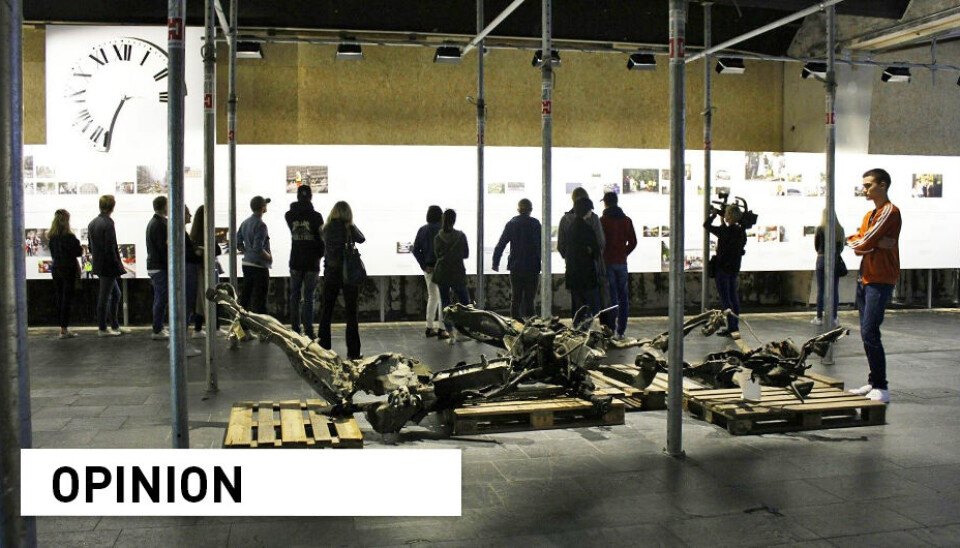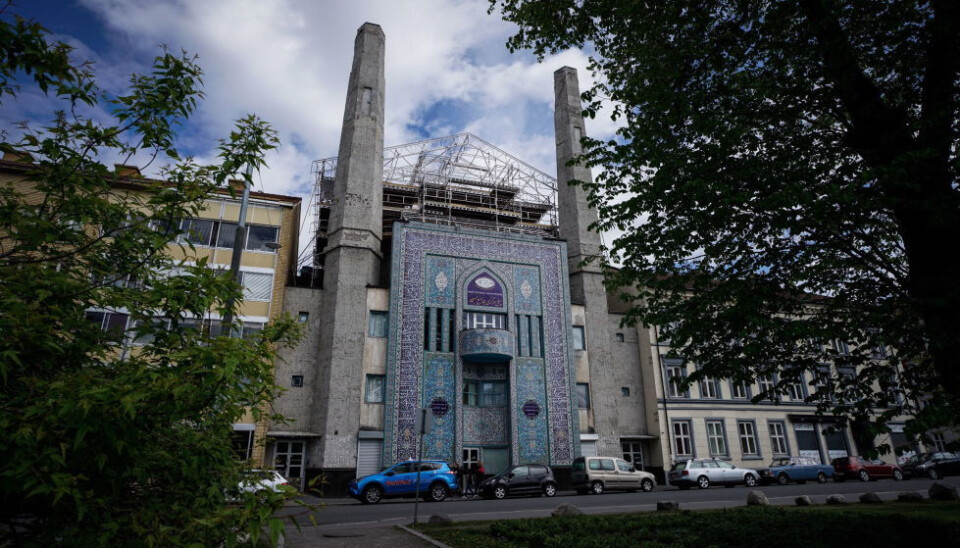Opinion:

Claiming a terrorist is ‘one of us’ is highly problematic
OPINION: The phrase ‘He was one of us’ has become entrenched in Norwegian public rhetoric after the far-right terrorist attack on 22 July 2011. This poses a threat to a more tolerant society.
When an extreme-right terrorist attack was carried out by a young white man from one of the best neighbourhoods in Oslo’s West End on 22 July 2011, Norway lost its innocence and damaged its self-projected image as a global leader in peace and cultural inclusivity. Each year since the attack, 22 July has been a day of national commemoration and memorialisation in honour of those brutally killed by this young Norwegian terrorist – a total of 77 innocent people.
The two locations where the victims died – the Utøya and Oslo governmental blocks – have since become major memorial sites. This year was the 10th anniversary of the country’s worst peacetime slaughter. The event was commemorated throughout Norway, especially at the memorial sites, with speeches, flowers and other tributes.
Reflections on the shock that the terrorist was ‘one of us’ repeatedly arose in the many speeches that politicians and other governmental representatives made on 22 July 2021, including in a debate among politicians arranged by the 22 July Centre at the University Aula in Oslo. The phrase ‘one of us’ reflects the fact that the terrorist represents the average white Norwegian ethnic man in a social democratic society that offers equal opportunities to everyone. At the same time, the phrase also implies that there are ‘others’ who represent outside threats to ‘our’ society and ideals. This juxtaposition is especially relevant because the 9/11 attack perpetrated by Muslim extremists is still fresh in our minds.
Defining culture and identity in dualities can promote injustice
Culture and heritage are often comprehended in two different, basic ways: as a unit that remains stable over time without significant external cultural influence (cultural purity) or that is constantly shaped by external cultural influence (cultural hybridity).
Ethno-nationalists want to claim that cultural purity is a reality to support their culture wars and political project. Human history and heritage are, however, dominated by traces of the interaction and intermingling between cultures – a fact illustrated by each person’s complex DNA. However, with the rise in nationalism and right-wing extremism in society today, perspectives on history, heritage and cultural values based on ‘purity’ tend to dominate over ‘hybridity’, creating cultural battles, power dominance and injustice.
We enter a dangerous path when this rhetoric about ‘us’ and ‘them’ is used, consciously or unconsciously, to justify injustice.
In her book Epistemic Injustice: Power and the Ethics of Knowing, British philosopher Miranda Fricker (2007) argues that prejudice is so deeply rooted in society and culture that throughout history, it has been maintained as a black box; that is, patterns of thought, worldviews and behaviour are taken for granted, performed unconsciously and passed on through generations in everyday life and actions.
In this context, ‘epistemic’ can be defined as the basic and pervasive knowledge and framework for cognition that prevails in a society.
Language can camouflage the reality of slave history
Language use is a key source in creating and disguising such epistemic injustice. For instance, when cultural heritage curators in their dissemination work in Charleston, South Carolina, USA, during a visit in 1999, used the term ‘black workers’ instead of ‘slaves’, the intention was to camouflage the unpleasantness of American slave history. Similarly, in 2013, in advance of the 100th anniversary, in 2017, of Denmark selling its Caribbean colony to the United States, Norwegian Prime Minister Jens Stoltenberg stated that Norway was never part of the slave trade and that ‘Norway is so highly valued in the world because we have no colonial past’. His misrepresentation was an attempt to purify and maintain a myth about Norway as a country without xenophobia, hate speech and extremism.
We enter a dangerous path when this rhetoric about ‘us’ and ‘them’ is used, consciously or unconsciously, to justify injustice and not only reinforces hatred within extremist circles but also becomes a normal part of public discourse, contributing to cultural exclusion rather than inclusion in society.
The phrase ‘He was one of us’ in official public rhetoric and speeches thus camouflages a black box of epistemic injustice. It intuitively maintains a distinction between white ethnic Norwegians and the rest, who are classified as ‘other’ Norwegians. Along with this comes the stigmatisation and discrimination of immigrant groups based on ethnic background, religion, national pathos and length of citizenship.
A key task is to uncover epistemic injustice behind language use because unfairness and injustice are structurally embedded in communication, institutions and practices, which, in turn, are transmitted through generations, maintaining socioeconomic inequalities.
A new cultural heritage act under development in Norway
In the New Goals for Norway’s Cultural Environment Policy – Meld. St. 16 (2019–2020) white paper to the Norwegian parliament, Stortinget, the government launched a start-up for drafting a new Cultural Environment Act to replace the current Cultural Heritage Act from 1978. While the white paper highlights the challenges of developing a new act for heritage in light of environment and climate politics, references to culture and cultural politics are hardly mentioned. Being aware of language use is vital in law-making, especially considering epistemic forms of injustice, both historically-based and structural, are embedding in language.
Instead of saying ‘He was one of us’, we could argue that the terrorist was ‘not one of us’.
It will be crucial for the committee working on the new Cultural Environment Act to collaborate closely with the heritage management sector and cultural and heritage researchers and to listen carefully to citizens’ and immigrants’ perspectives on cultural heritage while formulating the act’s purpose.
What will ‘our’ cultural heritage entail in the new act, and what types of intangible and tangible cultural heritage will it include and exclude as representative of a culturally diverse Norwegian society? The main goal for a new heritage act must be to reflect and address citizenship and ‘Norwegian’ identity as it evolves in the 2020s. This evolution will certainly challenge outdated binary definitions and relations between the cultural categories of ‘us’ and ‘them’.
Developing and using the Cultural Environment Act holds the potential to uncover the epistemic injustice conditions present in our understanding and use of cultural heritage, historically as well as currently. From there, we can discuss what cultural heritage will mean for a culturally diversified future generation.

The way forward for an updated or modified language
One way to move beyond outdated culturally binary notions of ‘us’ and ‘them’ is to use inclusive language that places emphasis on the responsibility of citizenship and being a fellow citizen. Acknowledging fellow citizenship in defining cultural identities is key in determining what ‘our common heritage’ means today in Norway. In fact, one of the main national goals described in Meld. St. 16 (2019–2020) refers to democracy as a key element, declares that cultural heritage concerns everyone and defines communicative arenas for democracy building, participation and a culture of expression.
Working from the perspective of common citizenship, instead of saying ‘He was one of us’, we could argue that the terrorist was ‘not one of us’. We can say that his criminal act and the default undemocratic values that he represented do not represent ‘us’ without jeopardising the message that we must not neglect to build a robust society from the ground up and within.
It is also necessary to include a dialogically-based concept of culture and identity in the act. This concept requires a language that is inclusive, facilitates curiosity for the ‘other’ and acknowledges identity as something in process and always in the making.
Law-making should reflect cultural diversity
According to the notion of cosmopolitanism that philosopher Kwame Anthony Appiah (2007) presents in his book Cosmopolitanism: Ethics in a World of Strangers, we should all recognise or identify the pleasure of living in a world among strangers by embracing the ‘other’s otherness’. Building on Appiah’s notion, when citizens include the ‘other’s otherness’ in their own voice, and thereby create true cultural dialogues, it will be possible to adopt a new language that reflects a culturally shared understanding of ‘our common heritage’.
The new Cultural Environment Act will need to embrace modified language to define culture and cultural heritage. The law-making should reflect the cultural diversity in Norwegian society and be open to great variations in what is considered important and relevant to cultural heritage for today’s population and future generations.
The new heritage act must also reflect the challenges and tasks of heritage curators and the need to create a dialogical arena for debates about cultural intolerance, injustice, racially motivated violence and hate speech. This would be a primary focus and mission for the new 22 July Centre in Oslo when it exhibits artifacts and personal stories of the painful history derived from the terrorist attack as well.
Further readings:
Appiah, Kwame Anthony. 2007. Cosmopolitanism: Ethics in a World of Strangers. New York: W. W. Norton & Company.
Fricker, Miranda. 2007. Epistemic Injustice: Power and the Ethics of Knowing. Oxford: Oxford University Press.
Norwegian Ministry of Climate and Environment: Meld. St. 16 (2019–2020) Report to the Storting (white paper). New Goals for Norway’s Cultural Environment Policy: Involvement, Sustainability and Diversity. https://www.regjeringen.no/contentassets/35b42a6383f442b4b501de0665ec8fcf/en-gb/pdfs/stm201920200016000engpdfs.pdf
Share your science or have an opinion in the Researchers' zone
The ScienceNorway Researchers' zone consists of opinions, blogs and popular science pieces written by researchers and scientists from or based in Norway. Want to contribute? Send us an email!





























